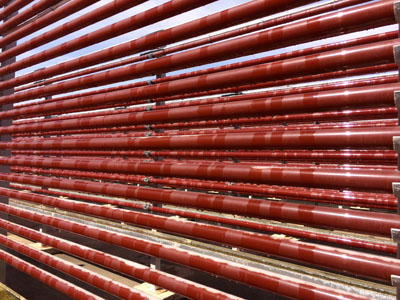Any marketer who dismisses the beauty-from-within business as a mere triviality probably hasn’t paid attention to the excitement (and profits) the sector generates, experienced the profound effect that physical appearance has on emotional wellness … or both.
They fail to do so at their — and their brand’s — peril. That’s because with analysis from Research and Markets projecting the value of the global beauty care industry to reach $461 billion by 2018, it’s hard to find anything “trivial” about this category. At the same time, we’re learning that the reverse is also true: people who actively take charge of their health not only feel better, they also find themselves looking better too.
It’s that line of thinking that’s fed the emergence of nutricosmetics — foods, beverages and supplements whose formulations promote beauty-from-within. As research continues to reveal just how diet and appearance interact, product developers are following the evidence to produce ingredients that deliver considerable skincare benefits; one of the most exciting is the carotenoid antioxidant, astaxanthin.
Antioxidants and skin health
It all starts with sunlight and the ultraviolet radiation it conveys. When UVA and UVB rays hit the skin — the latter reaching the epidermis and the former penetrating all the way into the papillary dermis and dermis — they don’t just cause erythema, or reddening, they also trigger the in-situ production of reactive oxygen species (free radicals or ROS) and matrix metalloproteinases (MMPs), which are enzymes that break down collagen, compromising the skin’s structural scaffolding, reducing its elasticity and hastening wrinkles.
Repeated attacks by UV-induced ROS and MMPs not only generate more damage, but overwhelms the skin’s endogenous repair mechanisms, further advancing the signs of ageing. As if that weren’t enough, excess sun exposure can precipitate melanoma or skin cancer. Hence the need for antioxidant compounds in the diet — or in nutricosmetic and cosmeceutical formulations — to “neutralise” UV-induced ROS and put the brakes, to some extent, on the oxidative chain reactions that harm skin.

Astaxanthin: at home in skin
Popular and well known antioxidants are vitamins E and C — alpha-tocopherol and ascorbic acid, respectively.
But although the supporting science for vitamins such as C and E is strong, as well as antioxidants including CoQ10, polyphenols and carotenoid pigments, the antioxidant with the single-best record for quenching ROS — and with an increasingly impressive body of evidence behind its skin-health benefits — is natural astaxanthin (3,3’-dihydroxy-ß-ß-carotene-4,4’-dione).
cAstaxanthin is a xanthophyll carotenoid that gives sea creatures such as shrimp, lobster and even salmon their orange-pink colour. The richest natural source is the algae Haematococcus pluvialis (H. pluvialis), whose cells ramp up their production and storage of the carotenoid when threatened from environmental conditions.“One such threatening condition is intense incident UV radiation from sunlight,” says Algatech’s R&D Manager, Santiago Ini, PhD, “and it’s been demonstrated that one of the roles astaxanthin plays in the algae is as a protective agent against the photo-oxidation that such intense sunlight brings.”
Its ability to protect against this oxidation lies in its chemical structure: as a polar carotenoid, it can span the full breadth of the cellular membrane, poking its hydrophilic heads into both the internal cytoplasm and the extracellular environment, and nestling its non-polar carbon chain amidst the fatty acid tails of the cell’s phospholipid bilayer.
“It’s this transmembranous alignment,” Ini explains, “that appears to facilitate the electron transfer from free radicals along the conjugated double bonds of astaxanthin’s carbon scaffold and then to vitamin C. After vitamin C ‘accepts’ the electron, astaxanthin is effectively ‘recharged’ and prepared to protect the cell again.”
When researchers examined the singlet-oxygen-quenching capacities of a handful of hydrophilic and lipophilic antioxidants using a standard chemiluminescence detection system, they not only found that carotenoids in general exhibited stronger total quenching rate constants than polyphenols, tocopherols, ascorbic acid, CoQ10 and alpha-lipoic acid, but that astaxanthin, in particular, possessed the strongest overall activity.
Evidence starts in the cell

Given astaxanthin’s antioxidant potency — not to mention its nature-made role a UV shield in H. pluvialis — scientists were keen to determine just how ably it quenches photogenerated free radicals in human skin. Researchers began their exploration by observing astaxanthin’s behaviour in cell cultures.
More than 20 years ago, astaxanthin’s resistance to photo-irradiation in liposomes, spherical cell-like vesicles with at least one lipid bilayer was established. This was an early milestone that led to further cellular studies, showing that astaxanthin attenuates UVA-induced upregulation of MMP-1 and skin fibroblast elastase (SFE), an enzyme that breaks down the structural protein elastin.
Research also revealed that astaxanthin inhibits the overproduction of melanin in melanoma cells, cutting off carcinogenesis at a critical step in its progress. And, in another study performed in human dermal fibroblasts, astaxanthin exhibited a pronounced photoprotective effect and counteracted all UVA-induced alterations.
This is in contrast to ß-carotene, which only partially prevented several UVA-induced reactions and increased membrane damage while also stimulating expression of heme oxygenase 1 (HO-1), an enzyme that catalyses the degradation of heme, an iron-containing compound found in haemoglobin and other biological compounds. Further, fibroblasts took in more astaxanthin than they did ß-carotene, with astaxanthin’s photostability once inside the cells much higher than that of ß-carotene.
Animal models
After establishing astaxanthin’s potential in the cellular environment, the next step for researchers was to explore its record in animal models, and two important studies using UV-irradiated hairless mice as subjects demonstrated astaxanthin’s utility.
Researchers first found that light-assaulted mice did in fact exhibit a higher level of the polyamine putrescine, but that oral supplementation with astaxanthin inhibited putrescine accumulation better than supplementation with retinol, and decreased levels of two additional polyamines, spermidine and spermine, as well.
Thus, it was encouraging that when wrinkle formation was examined in astaxanthin-treated mice, researchers observed less irreversible wrinkling than in control mice.
Scanning electron micrographs of dermal collagen fibre bundles also confirmed that the bundles in the astaxanthin cohort maintained their structural integrity, “demonstrating the potential of topical post-irradiation treatment with astaxanthin to reduce one of the most important targets of cosmetic intervention: wrinkling,” Ini says. “Taken together, both studies show that astaxanthin can work in products that promote beauty from the outside in, and the inside out.”
Human evidence
Three key human studies have investigated astaxanthin’s effects on skin condition, with both topical and oral delivery methods subject to examination. In the first, a pilot trial, scientists found an association between repeated topical application of an astaxanthin-containing cream and a significant increase in moisture levels and visual wrinkle reduction after 4 weeks of use.
Following that, a double-blind placebo-controlled study of 16 healthy, middle-aged Japanese women aimed to evaluate the cosmeceutical benefits of a dietary supplement containing 2mg of astaxanthin and 40mg of tocotrienol from palm oil. After 2 weeks of daily dosing with the combination supplement, subjects in the treatment group self-reported improvements in spots and freckles, whereas dermatologic inspection revealed improvements in dark eye circles compared with those in the placebo cohort.
After 4 weeks, supplemental subjects again reported improvements — this time in acne and pimples — whereas clinician assessments showed greater moistness, elasticity and smoothness in the supplement group. What’s more, magnified skin-surface inspection showed fewer wrinkles in the treatment group after 4 weeks.
A larger single-blind placebo-controlled study of 49 healthy, middle-aged American women again found significant improvements above baseline in fine lines, wrinkles and elasticity upon visual dermatological assessment after 6 weeks of daily supplementation with 4mg of astaxanthin. And assessment of the treatment group at 6 weeks using skin-surface photos showed better skin elasticity, fine lines and wrinkles compared to the placebo, too.
Natural is special
“The combined results of all three studies more than suggest astaxanthin’s superior protection against photoageing, whether subjects take it internally or apply it externally,” Ini says. “These paired methods of action position astaxanthin as a versatile — and effective — ingredient for an array of product platforms.”
But another important characteristic uniting all three studies is that they examined astaxanthin derived naturally from its richest natural source, the H. pluvialis algae. “And this is important because, as the studies show, when it comes to astaxanthin, natural really is preferable,” Ini notes.
In its natural state, astaxanthin exists in three stereoisomers distinguished by an “S” or “R” in their names, with the 3S, 3’S form predominant in the carotenoid’s primary algal source; chemically synthesised astaxanthin, by contrast, can be as much as 50% 3R-3’S’ stereoisomer, which has little to no scientific record of efficacy.
Consider, for example, that despite the fact that a study showed both synthetic and natural astaxanthin to reduce erythema in healthy human subjects, the suppression that was attributable to natural astaxanthin was stronger than that of the synthetic.
Further, natural astaxanthin was associated with faster recovery of the erythema index, suggesting anti-inflammatory properties that, in concert with inhibition of melanin formation, may contribute to the reduction of hyperpigmentation, the researchers concluded.
“Whether or not the future of skincare includes a strong role for nutricosmetics and cosmeceuticals will ultimately on consumers’ comfort with the products and satisfaction with the results,” says Efrat Kat, Director, Marketing and Sales, Algatech.
“And while we know that no single active can claim to be the category’s silver bullet, evidence is practically undeniable that no formulation can call itself complete unless it includes the antioxidant protection of natural astaxanthin.” Now that’s beauty advice we can all feel good about.
